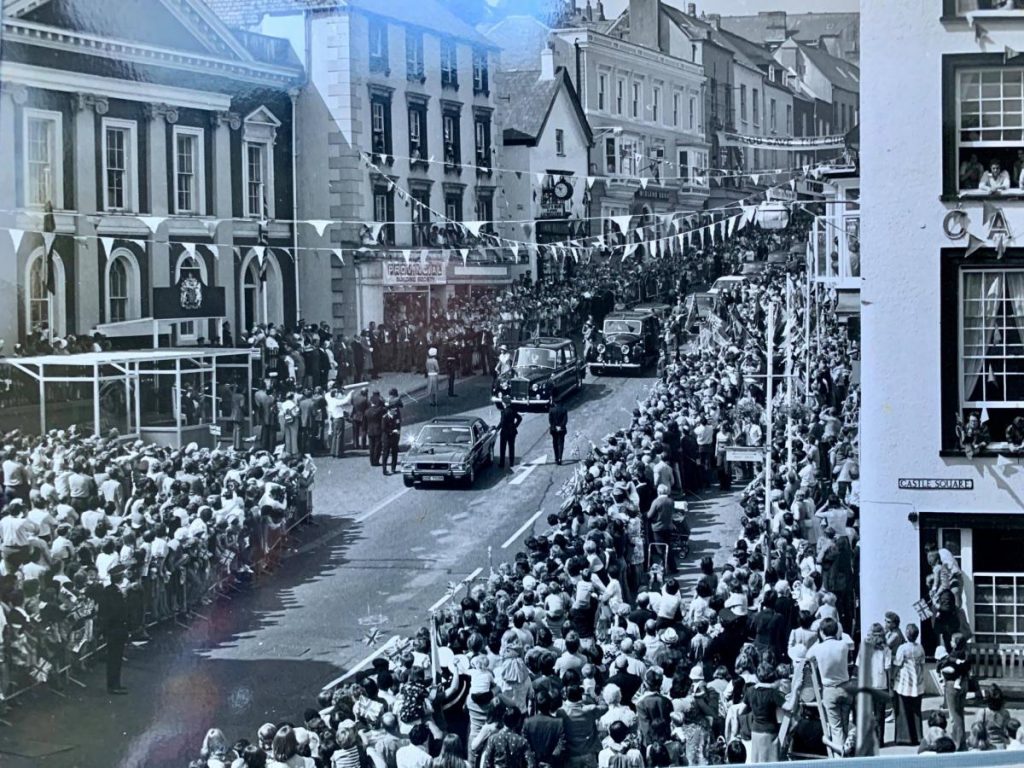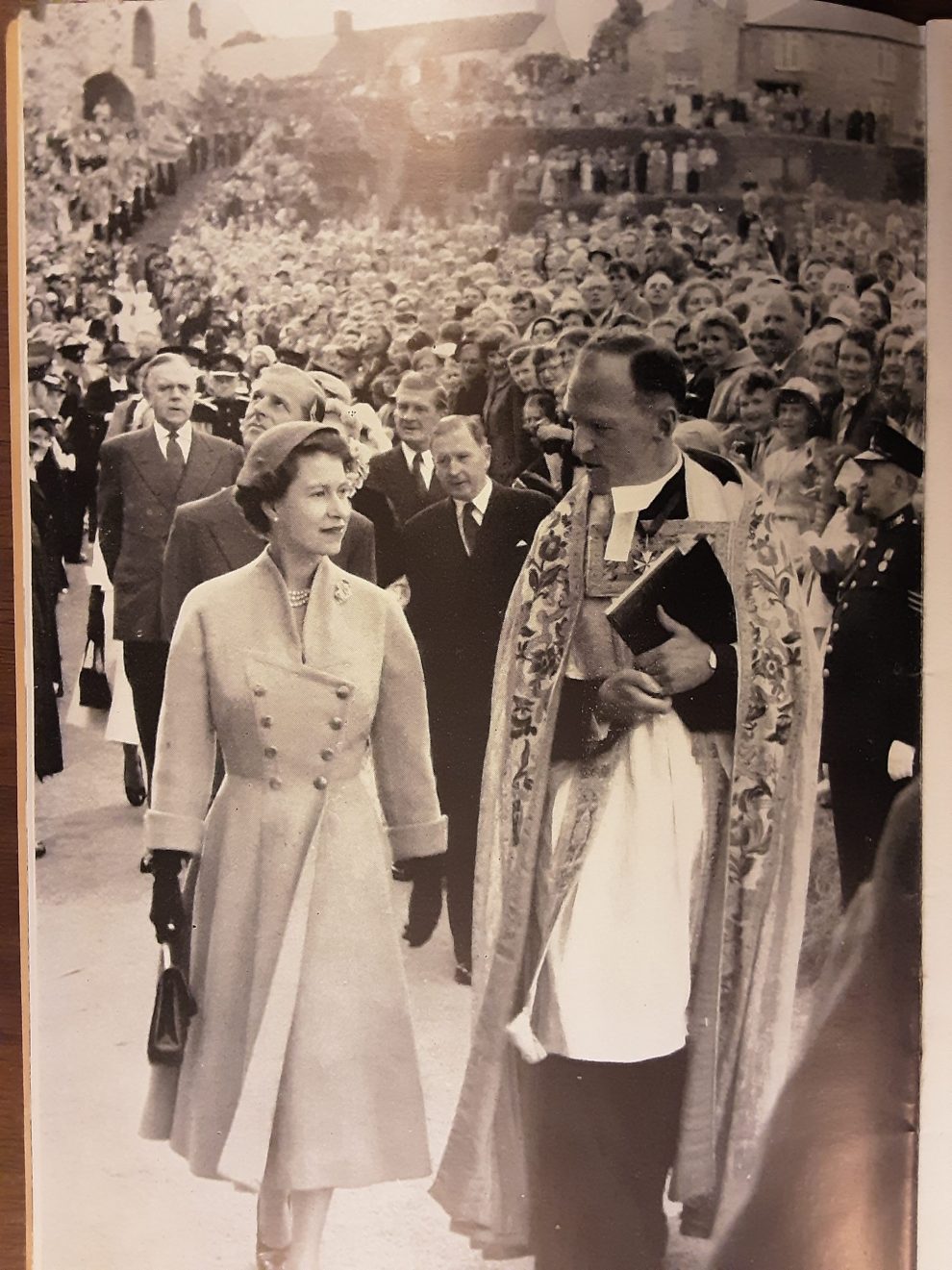OVER the course of her long reign, it would be a stretch to say Queen Elizabeth II was a regular visitor to Pembrokeshire.
However, from her first official visit in 1955 to her final one in 2014, she would see how Pembrokeshire changed over the decades.
When she arrived at the River Cleddau on the Royal Yacht Britannia in 1955, the waterway looked much different than it does today.
When the royal children Charles and Anne disembarked to visit the beach at Lindsway Bay, they enjoyed a different view than modern visitors.
Instead of refineries, the relics of Second World War radar and aircraft stations fringed the estuary, and farmland sloped down to the river on either side.
The Royal Dockyard at Pembroke Dock closed in 1926 but still housed 210 Squadron of the RAF and the iconic Sunderland aeroplanes, a legacy of the War when the town was home to the largest operational base for flying boats in the world.
Pembrokeshire’s population fell after the War. The economy was still rural, and there was little heavy industry. The main towns retained their historical character, still littered with evidence of some’s medieval origins and their nineteenth-century expansion.
During the three-day visit, apart from Pembroke Dock, the Queen visited Dale, Neyland, Haverfordwest, Pembroke, and the cathedral city of St Davids.
When the Queen and Prince Philip returned to Pembrokeshire three years later, the Haven’s age of oil was just starting.
The coming of modern industry would change Pembrokeshire forever.
In 1960, Prince Philip attended the official opening of the ESSO refinery; within five years, the Regent refinery was online.
By the time of the Queen’s next official visit in 1968, the Haven would be much changed.
Construction of the “new” Pembroke Power Station was well underway. Her Majesty toured the new, state-of-the-art Gulf Refinery.
When she returned nine years later to mark her silver jubilee, Pembrokeshire’s oil industry was already at the start of its long and slow decline.
On June 7, the County’s streets thronged with people celebrating the Silver Jubilee at street parties that sometimes stretched long into the evening.
During the gloriously sunny weather that accompanied her visit on June 23, the Queen travelled to Milford Haven and Haverfordwest while crowds filled the streets as the royal motorcade whisked her through Pembroke Dock en route to the County’s two largest towns.

Well-wishers packed Haverfordwest’s High Street fifteen-deep on either side as the royal party visited the town’s Shire Hall.
During her visit to Milford Haven the same day, the royal party could reflect on how the town had rapidly expanded as industry overtook the town’s fishing industry.
By 1982, the old certainties had faded further.
The early 1980s recession hit Pembrokeshire hard. While the revamp of the now-Texaco refinery provided short-term relief from the oil industry’s decline, the County the Queen visited in 1982 was in a worse economic situation than it had been since the 1950s.
Even during the salad days of refinery building, unemployment remained stubbornly above the national average. Now, Pembrokeshire was under the cosh.
Crowds still turned out in large numbers on Haverfordwest High Street as the Queen strolled down it flanked by flagbearers from the Royal British Legion.
The 1982 visit was particularly notable for being the first time the Queen awarded the traditional Maundy Money in Wales.
The BBC broadcast the ancient ceremony live from St Davids Cathedral, where the city centre and cathedral close were packed with onlookers trying to get a glimpse of the monarch.
The broadcast can still be viewed on YouTube. While the commentary borders on the comically reverent, the public’s enthusiasm remains clear.
In 1995, the Queen arrived in Solva on the Royal Yacht Britannia, having sailed from Cornwall.
During her visit, she re-conferred the city status on St Davids it had lost in 1886.
The trip was planned months in advance, and the visit’s purpose was its ceremonial aspect.
However, the Queen changed the programme to travel to Haverfordwest and meet the wives and children of five servicemen from the Royal Welch Fusiliers (based at Brawdy and of which she was Colonel-in-Chief) held hostage in Bosnia during the Balkan wars.
The tone of the coverage is markedly less reverential than thirteen years before, and the vox pops notably less strained and affected in tone.
In 2001, the Queen and The Duke of Edinburgh arrived at Haverfordwest Station. They travelled to St David’s Cathedral to open the restored Porth-y-Twr (gatehouse).
In the afternoon, she opened County Hall, Haverfordwest, and later visited Pembroke Dock Community School and officially opened it.
Afterwards, the Queen and The Duke of Edinburgh attended a Garden Party at Pembroke Castle before being whisked off to the next round of royal engagements.
In 2014, and always a keen horsewoman, The Queen visited Cotts Farm Equine Hospital at Robeston Wathen, where she was greeted by Narberth Scouts, before heading to one of Pembrokeshire’s business success stories at Prince’s Gate, Tavernspite, where she witnessed the production of the spring water that made the company’s name in the company of children from Tavernspite and Templeton schools.
The Queen and Prince Philip ate lunch at Picton Castle before heading to Pembroke Dock, her first landing point in Pembrokeshire almost sixty years before.
Having lived through so much of history, the Queen’s return to the town book-ended her visits to our County.
In 1955, Pembrokeshire was still emerging from the end of the Second World War.
Her Majesty saw the tail end of the County’s military connections and the dawning of industry.
Returning in 2014, she opened a heritage centre which memorialises the past through which she lived and saw the beginnings of a new economic direction for the County as it looked to the sea and tide for energy instead of oil.
From pastoral to industrial and post-industrial, ceremonial to personal to embodying a living heritage, the Queen saw Pembrokeshire over seven decades.
And those who saw her while she was here won’t forget their experiences.
















